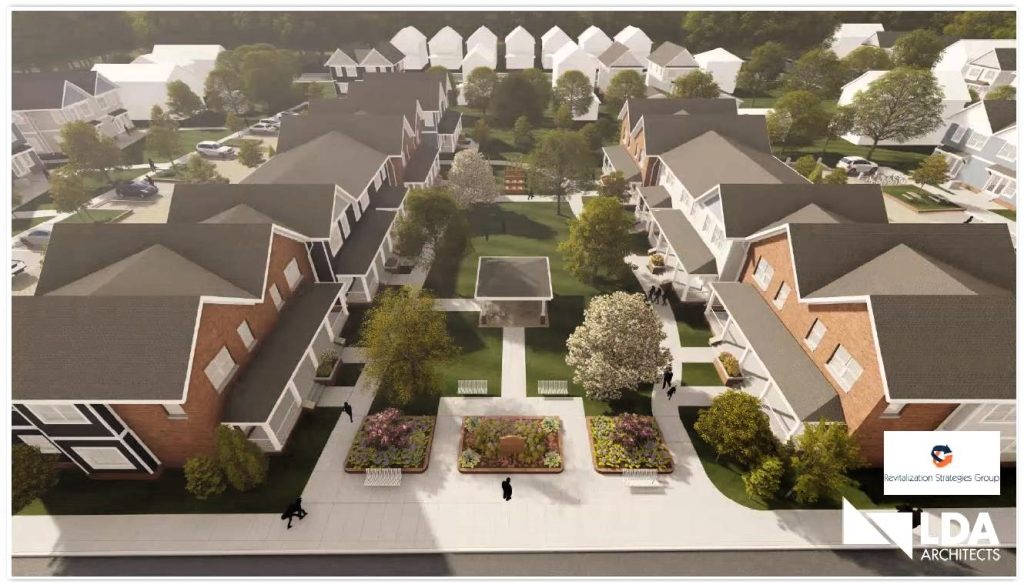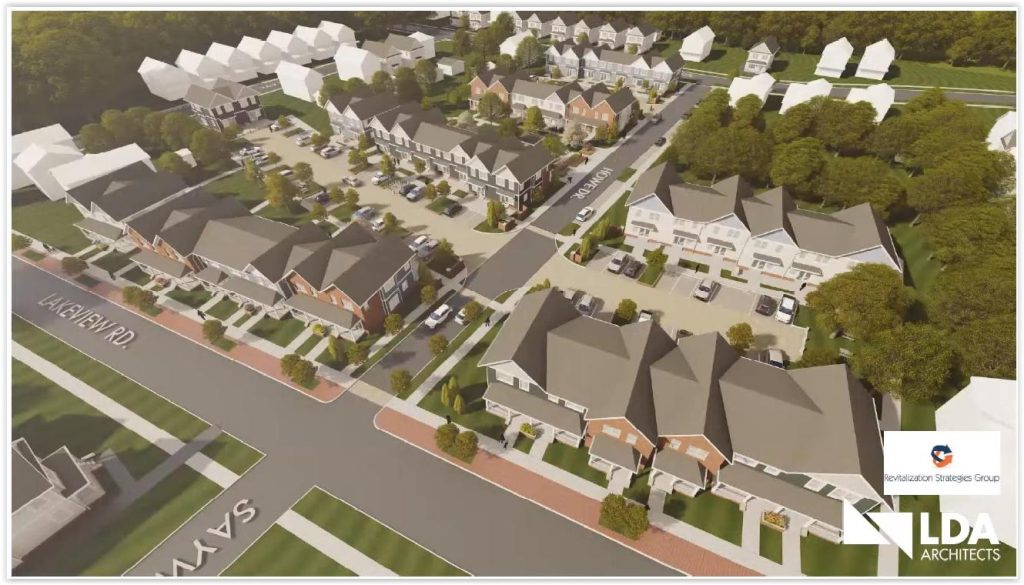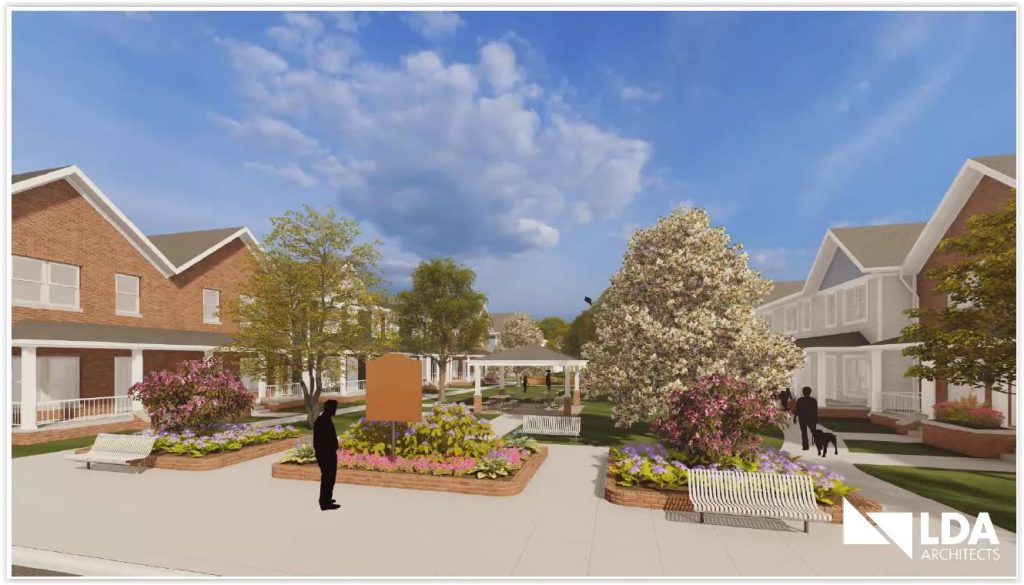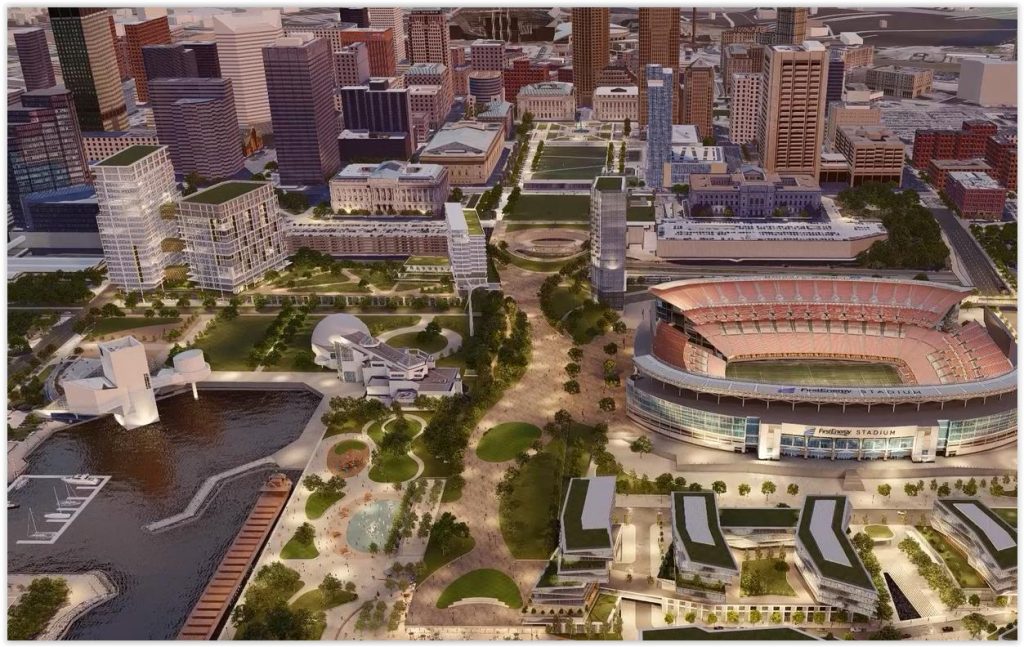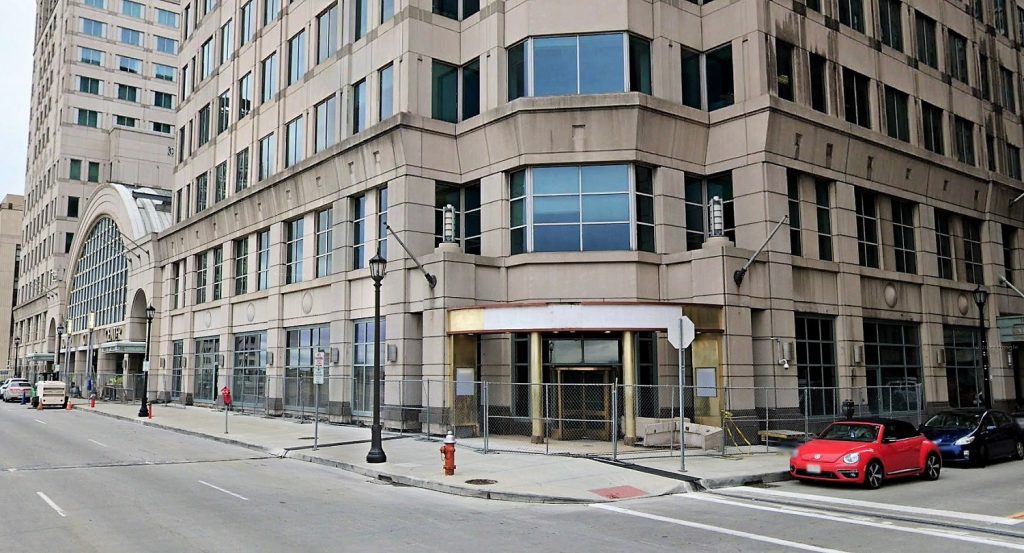School was a focus of desegregation fight
When the Cleveland Metropolitan School District put 19 former school properties up for sale in 2021, some of them had school buildings on them. Even those that didn’t anymore still had historical value to them. One of those was the former site of the Stephen E. Howe Elementary School in Cleveland’s Glenville neighborhood which was the scene of a fatal incident in the fight for desegregation of the school district.
Today, the City Planning Commission’s Design Review Committee approved a conceptual plan to build 68 affordable homes and a small park on the former school site, 1000 Lakeview Rd. The developer is Revitalization Strategies Group, a minority-owned firm doing business as RSG Cleveland LLC and based in Wylie, Texas, a suburb of Dallas.
Revitalization Strategies Group is led by Michael Bowen who has 26 years of experience building affordable housing around the country. His nearest project to Cleveland was in Oberlin. Since starting his own company in 2017, Bowen has developed about 750 affordable housing units, according to the Oberlin Review.
The 68 proposed residences would be built on and off the 2.2-acre school property. All 16 of the single-family homes are planned for Cleveland Land Bank properties near the school site. The land bank lots are in the area between Lakeview Road and Parkwood Drive, north of Ada Avenue and south of Tuscora Avenue. The rest of the residential units would be townhomes and built on or next to the former school site.
According to plans submitted to the city, phase one would offer 42 townhomes — eight with two-bedroom units, 32 three-bedroom units and two four-bedroom units plus the 16 single-family homes, all with four bedrooms. In phase two would be 10 townhomes — four two-bedroom units, five three-bedroom units and one four-bedroom unit. All of the housing is proposed as for-rent and will not exceed two stories.
Parking in curved lots will amount to 67 tenant spaces in phase one and 12 tenant spaces in phase two, plus 14 new on-street parking spaces, or 93 spaces total for 68 residences. That’s a housing-to-parking ratio of nearly 1:1.5, said Jesse Sweigart, a project manager at LDA architects, Inc. of Cleveland.
“They (the parking lots) curve a little bit just to give us a bit of extra greenspace and breathing room and allow us to manipulate the townhome buildings, allowing us to push them in and out to create a little bit more dynamics on the elevations of each of the buildings,” Sweigart said at today’s Planning Commission meeting.
He said the development site would add a private roadway, tentatively called Howe Drive, linking Lakeview and Linn. Homes would have brick and siding exteriors. The brick inspiration comes from the nearby, 102-year-old Integrated Faith Assembly Church. There will be several Americans with Disability Act-compliant units with a bedroom, bathroom and kitchen on the first floor. Trees, greenery and low-wall will provide screening of the parking areas and the use of brick pavers will offer permeable surfaces to absorb stormwater.
Although Planning Commission members unanimously approved the conceptual plans, it was not without conditions. Commission Chair Lillian Kuri suggested the proposed front porches be enhanced in some way to conform with those in the rest of Glenville which she said has a “front porch culture.”
Commission Vice Chair August Fluker urged the long townhouse buildings to be broken up with more walkways between them to improve access to a planned park at the center of the development. Suggestions were made at a recent meeting of the Northeast Design Review Committee to add more sidewalk connectivity between Linn and Lakeview and study the organization of the planned greenspace.
“In the greenspace will be a pavilion, community gardens, and an Ohio History marker regarding Howe School and the history of the civil rights movement including the sacrifices made on this site,” Sweigart added.
That history is a compelling one. While Cleveland’s overall population declined after 1950, that wasn’t the case on the East Side where the postwar Great Migration from the rural South brought overpopulation and crowded schools while mostly white West Side schools were underpopulated. African-American children were bussed to predominantly white schools on the West Side and in Little Italy, the latter resulting in a riot in January 1964.
After the Little Italy riot, the school board approved the construction of several new schools in predominantly black neighborhoods. But that was seen as keeping African-Americans in ghettos instead of giving them access to higher-quality schools in predominantly white neighborhoods. That sentiment was reinforced as East Side schools received second-hand textbooks and supplies from West Side schools.
On April 7, 1964, protests at the construction site for the new Stephen E. Howe Elementary school entered their second day, noted ClevelandHistorical.org. Rev. Bruce Klunder, 27, father of two, married, white and a founding member of the Cleveland Congress on Racial Equality, laid down behind a bulldozer as four protestors laid in front to prevent the construction from taking place.
The bulldozer operator tried to avoid the protestors in front, backed up the bulldozer without seeing Klunder or hearing him scream, and instantly crushed the reverend to death. “Riots followed,” reported Cleveland Magazine. “In a crowd of about 3,500, cars were flipped, tear gas employed. Thirteen were injured, including police. Twenty-six were arrested.”
Despite the protests, the school was built and named after a Cleveland school district administrator. Unfortunately, Klunder’s death wasn’t the only tragedy at the school. In 1993, kindergartner Chadey Anderson was shot and killed during a drive-by shooting.
At the school, a plaque was placed and a tree planted in their memory, across the street from Greater New Zion Baptist Church. The tree and plaque were spared when the school building was demolished in 2013. The tree and plaque will be relocated or otherwise retained as part of the redevelopment.
After 2000, district-wide school enrollment fell as a result of the foreclosure crisis mostly on the East Side and a loss of manufacturing jobs regionwide. Stephen E. Howe Elementary was among the many schools that were closed by the district in 2006. Another 18 schools were closed in 2010 as enrollment fell to 50,000 from 78,000 a decade earlier. Howe Elementary School’s vacant property was appraised at and disposed of for $120,000, school district records show.
The biggest school property that was disposed of as a result of the 2021 offering was the former Martin Luther King Jr. High School, 1651 E. 71st St. in Hough, which is now the proposed site of the largest Hough residential development in the last century. Due to more stable school enrollment and population on the West Side, only one school property there was part of the district’s 2021 offering — Nathaniel Hawthorne Elementary School, 3575 W. 130th St. in Jefferson. Renovations of that building are already underway.
END

